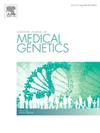全球罕见病护理、研究和教育的远程医疗:IRDiRC 远程医疗工作组的文献综述。
IF 1.7
4区 医学
Q3 GENETICS & HEREDITY
引用次数: 0
摘要
国际罕见病研究联盟 (IRDiRC) 远程医疗 (TH) 工作组探讨了如何利用远程医疗改善罕见病 (RD) 的诊断、护理、研究和教育。特别小组查阅了 2017 年 1 月至 2023 年 8 月期间发表的相关文献,确定了针对罕见病的远程医疗的各种模式和实施策略。专责小组强调了所报告的针对罕见病使用 TH 的价值和益处,以及局限性和机遇。自 2021 年以来,随着 COVID-19 大流行的爆发,发表论文的数量急剧增加,这迫使许多医疗机构迅速采用 TH。对研发人员而言,医疗卫生服务的主要优势之一在于其跨越地域障碍的能力,这有助于克服专家人数有限和地域分散所带来的限制。在大流行病期间,当面对面的就诊受到严重限制时,TH 被用来维持持续的医疗护理和研究水平,这一点非常明显。通过 TH,临床研究可以分散进行,还可以通过减轻负担、扩大就诊范围和提高效率来促进和加强区域发展研究。在采用移动医疗(mHealth)和可穿戴设备进行远程监控(即通过设备传输门诊数据进行监控)等数字医疗技术以及大数据解决方案的同时,这将尤其有益。事实证明,TH 也是进行 RD 教育和同伴指导的有效手段,可使当地医疗保健提供者(HCPs)为 RD 患者提供护理,从而间接确保 RD 患者获得所需的专业知识和多学科护理。但是,也发现了将 TH 用于 RD 护理和研究的局限性和弱点,包括无法进行体格检查和与 HCP 建立关系。因此,建议将 TH 作为面对面咨询的补充,而不是替代。还有人担心,由于无法获得 TH 技术、数字素养不足以及地理、社会文化和语言障碍,TH 可能会导致 RD 患者的健康差距和与健康的社会决定因素相关的不公平现象扩大。最后,特别工作组还讨论了证据和知识差距问题,这些问题将从未来的研究工作中受益,以帮助推进和扩大使用口腔健康技术进行口腔康复护理、研究和教育。本文章由计算机程序翻译,如有差异,请以英文原文为准。
Telehealth for rare disease care, research, and education across the globe: A review of the literature by the IRDiRC telehealth task force
The International Rare Diseases Research Consortium (IRDiRC) Telehealth (TH) Task Force explored the use of TH for improving diagnosis, care, research, and education for rare diseases (RDs). The Task Force reviewed related literature published from January 2017 to August 2023, and identified various models and implementation strategies of TH for RD. The Task Force highlighted the reported value and benefits of using TH for RDs, along with the limitations and opportunities. The number of publications sharply increased since 2021, coinciding with the onset of the COVID-19 pandemic, which forced the rapid adoption of TH in many healthcare settings. One of the major benefits of TH for RDs lies in its capacity to surmount geographical barriers, which helps in overcoming the constraints posed by limited numbers and geographical dispersion of specialists. This was evident during the pandemic when TH was used to maintain a level of continued medical care and research when face-to-face visits were severely restricted. TH, through which clinical research can be decentralized, can also facilitate and enhance RD research by decreasing burden, expanding access, and enhancing efficiency. This will be especially beneficial when coupled with the adoption of digital health technologies, such as mobile health (mHealth) and wearable devices for remote monitoring (i.e., surveillance of outpatient data transmitted through devices), along with big data solutions. TH has also been shown to be an effective means for RD education and peer mentoring, enabling local health care providers (HCPs) to care for RD patients, which indirectly ensures that RD patients get the expertise and multidisciplinary care they need. However, limitations and weaknesses associated with using TH for RD care and research were also identified, including the inability to perform physical examinations and build relationships with HCPs. Therefore, TH has been recommended as a complement to, rather than substitute for, face-to-face consultations. There is also a concern that TH may lead to an amplification of health disparities and inequities related to social determinants of health for those with RDs due to lack of access to TH technologies, inadequate digital literacy, and geographical, socio-cultural, and linguistic barriers. Finally, the Task Force also discussed evidence and knowledge gaps that will benefit from future research efforts to help advance and expand the use of TH for RD care, research, and education.
求助全文
通过发布文献求助,成功后即可免费获取论文全文。
去求助
来源期刊
CiteScore
4.10
自引率
0.00%
发文量
193
审稿时长
66 days
期刊介绍:
The European Journal of Medical Genetics (EJMG) is a peer-reviewed journal that publishes articles in English on various aspects of human and medical genetics and of the genetics of experimental models.
Original clinical and experimental research articles, short clinical reports, review articles and letters to the editor are welcome on topics such as :
• Dysmorphology and syndrome delineation
• Molecular genetics and molecular cytogenetics of inherited disorders
• Clinical applications of genomics and nextgen sequencing technologies
• Syndromal cancer genetics
• Behavioral genetics
• Community genetics
• Fetal pathology and prenatal diagnosis
• Genetic counseling.

 求助内容:
求助内容: 应助结果提醒方式:
应助结果提醒方式:


